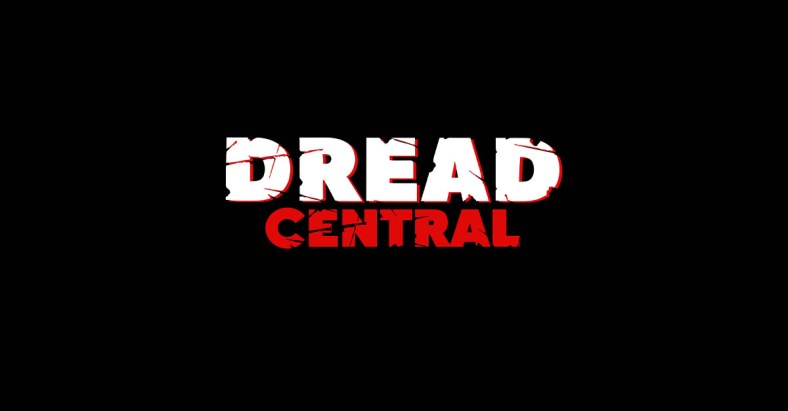Post-War Panic: Those Darn (Evil) Kids!

Stephen King’s IT and The Duffer Brothers’ “Stranger Things” show us that kids can save the day. There was an era not too long in the past, however, when parents were scared of their children and movies were happy to cash in on that paranoia.
Something odd happened as movies moved into the 1950s. Children, previously portrayed as kind innocents, began appearing evil.
The real world experienced a great rise in the birth rate, called the “baby boom.” The 1950s also saw juvenile crime double. Politicians and the media were quick to heighten anxiety about teenagers and a new phenomenon: teen culture. Dangerous influences could surely corrupt young minds, couldn’t they?
Most horror fans are familiar with films such as Ira Levin’s Rosemary’s Baby (1968), David Seltzer’s The Omen (1976), and Stephen King’s Children of the Corn (1984). Let me take you back to some movies horror fans should see for their connection to the manufactured parent panic of the postwar era.
It’s funny how many movies in the ’50s are about outside forces wrecking social perfection, like The Bad Seed (1956), also an immensely popular play and book.
Christine Penmark, portrayed by Patty McCormack in the movie and on stage, seems to be a normal eight-year-old. She is, in fact, a thief, liar, and conscienceless killer.
The Bad Seed was obviously not intended to be a horror movie, but a drama with an important warning to the audience about the next generation, which in my mind makes it even scarier — what kind of paranoia makes someone believe this kind of message important?
The movie features exceptional performances and was nominated for four Oscars. There are great character studies here, from the mother to the kid to the neighbors. Taken aside from social commentary, The Bad Seed is a very creepy movie, with better acting than most ’50s horror.
Be warned… this is ’50s pacing, often slower than modern audiences are used to. Apparently the ending in the book and play were way more terrifying than the movie, but that pesky Motion Picture Production Code objected.
A few short years after The Bad Seed, a group of strange children are born in a small English village. Village of the Damned (1960) wears sci-fi accessories but carries the same bad seed message. “Children are not born with a sense of moral values; that has to be taught,” said Professor Gordon Zellaby, portrayed by the stalwart George Sanders.
These similar-looking blonde children exhibit a hive-mind and the power to compel others against their will. It may be old-school effects, but seeing an 18-month-old’s eyes light up is terribly eerie.
In questionable control of all of this potential chaos are the British government, military, and science communities. Keep a stiff upper lip and all, chap… what could go wrong?
Since the children appear to be emotionless, the question becomes: Is it possible to establish empathy with someone without appealing to their emotions? Quiet and civilized, with moments of compelling terror from director Wolf Rilla (Roadhouse Girl), Village of the Damned continues the ’50s tradition of nudging us to fear our children.
Jump forward a decade, and kids are well into the “screw you and everything you stand for” era, especially in B-movie and grindhouse exploitation films. Don’t Deliver Us from Evil (1971) is the next step in that revolution, a French film where two girls, barely in their teens, explore evil. They take a vow to sin and serve Satan.
This is a strange one, more creepy than outright horror, similar to The Bad Seed, but way more sinister, as two young neighbors explore boundaries with cruel games that go beyond normal, childish high jinks. Pranks lead to seriously malicious behavior, which leads to — genuinely disturbing actions.
In The Bad Seed, Christine seems motivated by greed and jealousy, brat qualities we can all recognize in less troubled children. The kids in Village of the Damned are simply too advanced mentally to let emotions cloud their survival instinct. Anne (Jeanne Goupil) and Lore (Catherine Wagener) in Don’t Deliver Us from Evil appear to move toward the dark side due to curiosity, boredom, and lack of supervision.
Joel Seria, writer and director (always a good sign), never even considers using the typical horror movie scene where a horned demon rises in the mists and leans on the girls to sign a document in blood. It is all their own ideas that escalate the plot toward madness — but the young girls still appear quite sane.
Is this film exploitive, bordering in child pornography? Yes, it’s one of the elements that makes the movie so uncomfortable to watch. This was obviously done on purpose, and posters proudly proclaimed this was the only French film to be banned in France, probably due to the film’s digs at Catholicism.
Remember, though, we view horror because it make us squirm. That’s part of the appeal, why we keep coming back for more.
https://youtu.be/E07Hxqot7YE
For me, these three films can be seen as an arc, from Seed to Village to Don’t Deliver Us from Evil, putting the counterculture social revolution at the time into stark context. This was an era when long‐held values and norms of behavior were breaking down among youth. Parents were beyond concerned. They were scared of their kids. When people panic, anything can happen.
That, readers, is scariest of all!

Gary Scott Beatty’s graphic novel Wounds is available on Amazon and Comixology. Is madness a way to survive the zombie apocalypse? The strangest zombie story ever written, Wounds throws us into a world where nothing is beyond doubt, except a father’s concern for his wife and daughter. If you enjoy that “What th-?” factor in graphic novels, you’ll enjoy Wounds. For more from Gary Scott Beatty, visit him on Twitter and Facebook.

Categorized:News

